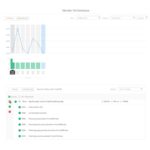Introduction to API Testing
API testing plays a crucial role in assessing application business logic, particularly as part of integration testing. It ensures that different software components interact seamlessly and adhere to specified rules and protocols. For comprehensive quality assurance, API testing is indispensable.

Understanding APIs
An Application Programming Interface (API) serves as a bridge between various software components, providing a standardized set of methods, tools, and protocols for communication. APIs facilitate efficient data exchange and streamline development processes by offering access to essential features and services.
Importance of API Testing
Testing APIs is essential for enhancing application test coverage, particularly at the Business Logic layer. Flaws in API functionality can lead to significant issues in application logic, performance, and security, underscoring the critical need for thorough API testing.
Overview of API Testing Tools
Several tools are available for conducting API testing, each offering unique features and functionalities. Among the most widely used tools are:
- Postman: A versatile tool designed for testing web services, offering a user-friendly interface and robust capabilities.
- Curl: A command-line tool used for sending requests via various protocols, including HTTP, HTTPS, FTP, and more.
- SoapUI: A free tool specialized in testing SOAP and RESTful Web Services.

Postman: A Comprehensive Tutorial
Getting Started with Postman
Postman provides a straightforward interface for sending HTTP requests and testing APIs. Users can input requests, set necessary headers, choose the HTTP method, and initiate requests with ease.
Leveraging Postman Scripts
Postman offers a valuable feature known as Scripts, allowing users to create JavaScript test scripts to validate API responses. These scripts enable automated validation of response attributes, such as response time and code.
Organizing Requests with Postman Collections
Collections are a key feature of Postman, enabling users to organize requests into separate folders for better management. Users can create custom collections, share them with team members, and import/export them in JSON format.

Testing Automation with Postman Monitor
The Postman Monitor facilitates automated testing by running collections at predefined intervals from diverse geographic locations. This feature helps ensure API endpoints operate effectively and return relevant data consistently.
Test Automation with Newman
Newman serves as a command-line collection runner, ideal for integrating tests with various continuous integration (CI) tools. By exporting collections in JSON format and running them with Newman, QA Engineers can automate testing and generate detailed reports.
Conclusion: Harnessing the Power of Postman
Postman emerges as a powerful tool for API testing, offering a comprehensive suite of features for efficient and effective testing. By mastering Postman skills and employing best practices in API testing, QA Engineers can elevate the quality of software products while optimizing time and effort expended in testing endeavors.






















